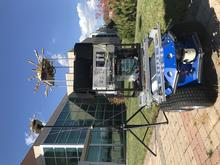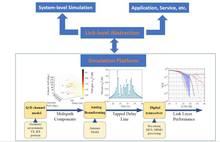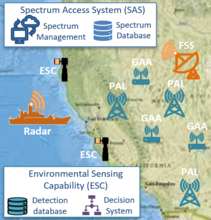Radio Access and Propagation Metrology Group
SCOPE:
- Develops novel measurement science to characterize and exploit radio-frequency channel properties for the next generation of wireless communications systems, with improved and more efficient spectrum use.
- Designs channel sounder architectures and algorithms to extract relevant wireless channel properties and develops methods to use the collected data to produce channel propagation models.
- Uses machine learning methods where applicable to advance autonomous channel model development, channel estimation, and antenna beamforming and to optimize other radio functions, such as those related to sensing.
- Utilizes channel characteristics to support radio resource allocation and optimization at the physical and media access layers.
- Disseminates results in the form of publicly available measurement and modeling data, top-tier journal and conference publications, contributions to critical standards development organizations, and collaboration with partners in U.S. industry, academia, and other U.S. government agencies.
NextG Channel Measurement and Modeling

The accelerating increase in wireless data usage has saturated the frequency bands below 6 GHz that are licensed to cellular service providers. Thus, wireless services must expand into additional bands to support current applications and meet future applications’ even greater demands. In particular, the FR3 band from 7.125 GHz to 24.25 GHz is a promising source of additional spectrum resources. To compensate for the high propagation loss at mmWave and sub-THz, phased array antennas with high gain and narrow beamwidth will be employed. The high directionality of NextG systems will fundamentally change channel propagation models and channel sounding systems and techniques used to measure the model properties. NIST is at the forefront of defining that change, supporting the need currently facing the wireless industry to accurately characterize wireless propagation in support of next-generation wireless communications systems. (learn more)
Physical Layer Design and Evaluation

The next generation of communications and sensing applications has considerable potential and presents new challenges. These include a need for new types of models that capture the behavior of signals in new frequency bands, coexistence with incumbent systems in or adjacent to new bands used by providers, and a need to support both communications and sensing functions with a single waveform. The physical layer is the lowest in the wireless communication protocol stack because it consists of the communication equipment that directly handles the transmission and reception of bits of data over wireless channels. NIST develops novel measurement-based channel models to aid equipment manufacturers and service providers in designing, developing, and evaluating the next-generation wireless communications systems. (learn more)
Citizens Broadband Radio Service

The Citizens Broadband Radio Service (CBRS) band occupies 150 MHz of spectrum available nationwide for commercial broadband use on a shared basis with the federal government. Sharing spectrum resources relies on sensors that detect when federal assets use the CBRS band and notify commercial services to vacate the band. NIST is working with other federal agencies such as the Department of Defense (DoD), the National Aeronautics and Space Administration (NASA), and the National Telecommunications and Information Administration (NTIA) to create models, tools, and datasets to assist in the development and enhancement of commercial systems that protect mission-critical federal systems from harmful radio frequency interference. (learn more)
Contacts
Radio Access and Propagation Metrology Group
-
(301) 975-3685
-
(301) 975-3512

